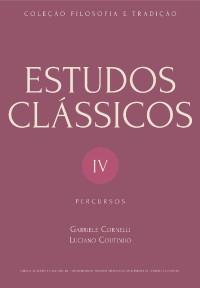Please use this identifier to cite or link to this item:
https://hdl.handle.net/10316.2/46071| Title: | Jesus de Nazaré: magia e resistência no evangelho de Marcos | Other Titles: | Jesus of Nazareth: magic and resistance in Mark’s Gospel | Authors: | Pimenta, Hernan Eber | Keywords: | Judaism;Christianity;Magic;Galilee;Resistance;Judaísmo;Cristianismo;Magia;Galileia;Resistência | Issue Date: | 2018 | Publisher: | Imprensa da Universidade de Coimbra | Journal: | http://hdl.handle.net/10316.2/46063 | Abstract: | The gospel according to Mark is, most likely, the oldest of the canonical gospels. Its composition is closely related to the region of Galilee. The text is a compilation of Galilean narratives about Jesus that were circulated in the first century. Galilee was doubly peripheral: it was part of Palestine’s periphery, which, in turn, was part of the periphery of the Roman Empire. Its population was subjected to a kind of economic exploitation that might result in triple taxing, creating a spiral of debt, misery, social delinquency and riots. In such context lived Jesus of Nazareth, a Galilean possessing magic powers, considered the “Son of God”. Jesus’ magic can be interpreted as a religious response to the misfortunes experienced in Galilee. We intend to work from the Gospel of Mark as a source, in order to understand the religious diversity found in Jewish and Christian monotheist systems of belief and perceive magic as a form of resistance and response of a social group that has been economically expropriated and politically overwhelmed by various foreign empires over the centuries. O evangelho de Marcos é provavelmente o mais antigo dos evangelhos intracanônicos. Sua composição possui relação estreita com a região da Galileia. O texto é uma compilação de narrativas galileias a respeito de Jesus que circulavam no primeiro século. A Galileia era uma região duplamente periférica: era periferia da Palestina que, por sua vez, era periferia do império romano. Sua população estava sujeita a uma exploração econômica que podia significar uma tripla tributação, o que criava uma espiral de endividamento, miséria, banditismo social e revoltas. Nesse contexto viveu Jesus de Nazaré, um galileu dotado de poderes mágicos, considerado “filho de Deus”. A magia de Jesus pode ser interpretada como resposta de natureza religiosa às mazelas experimentadas na Galileia. Trabalharemos com o evangelho de Marcos como fonte na intenção de recuperar a diversidade religiosa dentro dos monoteísmos de matriz judaico-cristã e perceber a magia como forma de resistência e resposta de um grupo social economicamente expropriado e politicamente subjugado, durante séculos, por sucessivos impérios estrangeiros. |
URI: | https://hdl.handle.net/10316.2/46071 | ISBN: | 978-989-26-1584-4 (PDF) | DOI: | 10.14195/978-989-26-1585-1_7 | Rights: | open access |
| Appears in Collections: | Estudos Clássicos IV: percursos |
Files in This Item:
| File | Description | Size | Format | |
|---|---|---|---|---|
| jesus_de_nazare__magia_e_resistencia.pdf | 531.08 kB | Adobe PDF |  |
Items in DSpace are protected by copyright, with all rights reserved, unless otherwise indicated.
